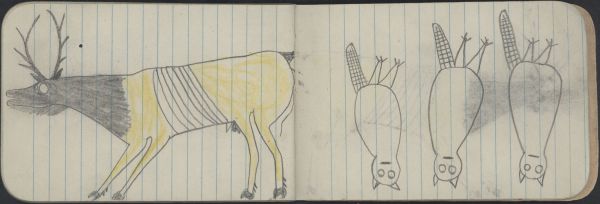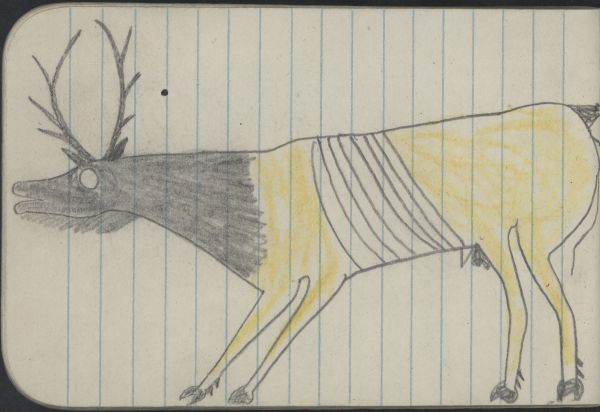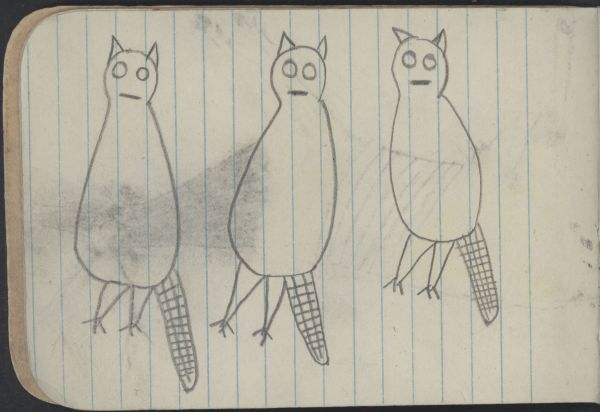ANIMAL, ELK; BIRDS, 3 OWLS
Ethnographic Notes
70 A bull elk runs from right to left across the page (extended legs show motion). He has dark shoulders and yellow body. He has a antlers (four by four points), and his round eye is created by an outlined circle of unpigmented paper, contrasting with the dark hide around it. The larger number of points indicates it is an older elk than others shown in earlier plates 19-32. Penciled details include antlers, ears, beard, split hooves, dewclaws, genitalia, midsection (ribs ?), and tail. Composition of the drawing resembles the same right-to-left, full-page orientation of human warrior portraits. Twelve nearly identical images of this male elk appear in this ledger (plates 19-23; 30, 32, 37-41). See further discussion for plate 19. 71 These three pencil-outlined owls have horns like great horned owls and prominent eyes. Their tails extend straight down, creating an almost abstract design. Their three-toed talons are visible, although no roosts are apparent. The barred tail and prominent ears are distinctive owl characteristics. From the frontal perspective, the foreshortened owl beak flattens out. This drawing is almost identical to the three owls in PILA plate 36. Owls are indicators of the night world and the after-life in Cheyenne thought. The prisoners at Dodge were indeed close to death. The Cheyenne word for "ghost" is the same as the word for "owl" (Powell Sweet Medicine fn 440, quoting Petter, Dictionary, p. 1000). Powell goes on to describe ghosts as spirits derived from the dead, but not ghosts of specific people. The depiction of owls in ledger art is extremely rare and "surprising," according to Powell (1984 letter). Making Medicine included a great horned owl in his "Fowls of Indian Territory" (Berlo, 1996: 136).


